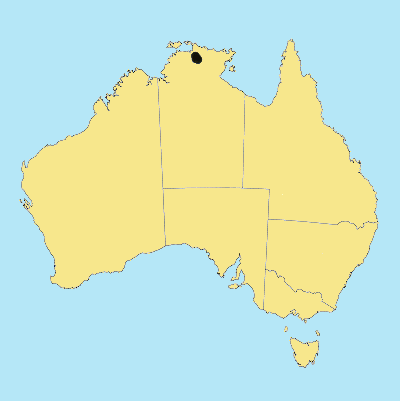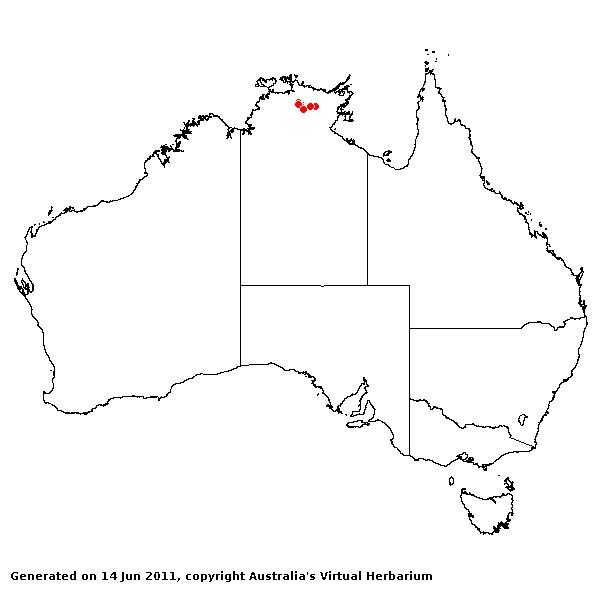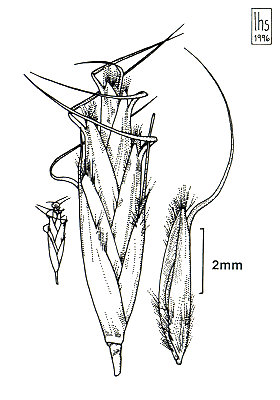Triodia contorta
(Lazarides) M. Lazarides. Austral. Syst. Bot. 10: 426(1997).
Classification. (GPWG 2001) : Subfamily
Chloridoideae. Triodeae.
Basionym and/or
Replacement Name: Plectrachne
contorta Lazarides, Nuytsia 5(2): 278 (1984) [1985].
Type of Basionym or
Protologue Information: Australia: Northern Territory: Darwing & Gulf
District: c. 7.5 miles SE of Mt. Gilruth, 13.07'S,133.09'E; 28 Feb 1973, Lazarides
7924 (HT:CANB; IT:BRI, DNA, K, L, MO, PERTH, US).
Key references
(books and floras): [2002] D.Sharp & B.K.Simon, AusGrass, Grasses of
Australia.
Illustrations:
[2005] K.Mallet (ed.), Flora of Australia 44B: Poaceae 3 (Fig.
34G-I).
Habit.
Perennial. Culms erect, 15–105 cm tall, 2–3 -noded. Leaf-sheaths glabrous on
surface or hairy. Leaf-sheath auricles absent. Ligule a fringe of hairs, 0.8–1
mm long. Leaf-blades conduplicate, 5–15 cm long, 0.8–3 mm wide. Leaf-blade
surface scabrous, indumented.
Inflorescence.
Inflorescence compound, a panicle. Panicle linear, 10–21 cm long, 3 cm wide.
Spikelets.
Spikelets pedicelled. Fertile spikelets many flowered, with at least 2 fertile
florets (6–7), comprising 6–7 fertile floret(s), with diminished florets at the
apex, elliptic, laterally compressed, 8–9 mm long.
Glumes.
Glumes dissimilar. Lower glume lanceolate, membranous or indurate, keeled,
1-keeled, 3–5 -nerved. Lower glume surface glabrous or indumented. Lower glume
apex awned. Upper glume lanceolate, 5–6 mm long, membranous or indurate, keeled,
1-keeled, 3(–5) -nerved. Upper glume surface asperulous, glabrous or
indumented. Upper glume apex lobed, awned.
Florets.
Fertile lemma 5.2–5.5 mm long, without keel or keeled, 5 -nerved. Lemma surface
indumented. Lemma apex lobed, awned, 1 -awned. Median (principal) awn from a
sinus, 8–12 mm long overall. Lateral lemma awns absent. Palea 2 -nerved.
Lodicules present. Anthers 3.
Continental
Distribution: Australasia.
Australian
Distribution: Northern Territory.
Northern Territory:
Darwin & Gulf.
Notes.
Distinguishing characters include the exserted florets; 2-lobed and 1-awned
glumes and lemmas; relatively short, partly hirsute palea; twisted lemma awns. P.
uniaristata is the only other species with exclusively 1-awned lemmas, but P.
contorta differs markedly from this species in spikelet morphology,
dimensions and indumentum.
Localised
between lat 12 and 13 S, and between long. 132 and 133 E in the N.T. Inhabits
sandstone plateaux, gorges and escarpments, on exposed outcrops, ledges and in
massive pavement cracks or fissures; flowers Feb.-March (summer).



